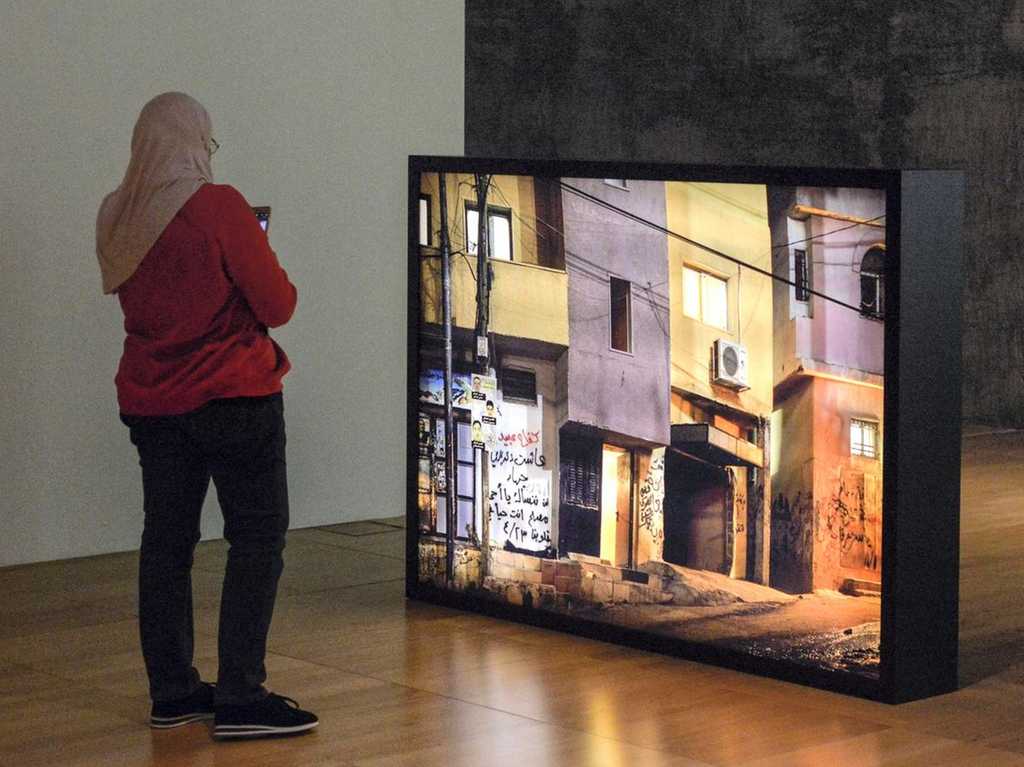Sandi Hilal and Alessandro Petti explore collective spaces in Palestine, where lives are stuck in the camps. PERMANENT TEMPORARINESS is the fullest retrospective of their work to date.
NYUAD exhibition 'Permanent Temporariness' explores the lives of refugees spent stranded in limbo.
In what curator Salwa Mikdadi calls the “euphoria” following the 1993 Oslo Peace Accords, construction began on a Palestinian Parliament building that the Palestinian Legislative Council could call home. Building started in Abu Dis, a suburb of Jerusalem. But as construction continued, a video from the artwork Common Assembly explains, the cartographer Khalil Tufakji noticed that the 1967 border ran smack in the middle of the Parliament, halving the very symbol of Palestinian representation.
The line bisected houses, too – one family entered their front door in occupied Jerusalem but slept in East Jerusalem – and had generally been drawn either with disregard for events on the ground, or with the knowledge of its contested position. Soon, even that line was disregarded and the Parliament building was abandoned in 2003 during the Second Intifada.
This story, exemplary of the complexity of the Palestinian-Israeli conflict, is brought to life in the work Common Assembly (2011), part of the New York University Abu Dhabi Art Gallery’s exhibition of work by the artist-architect duo Sandi Hilal and Alessandro Petti.
Read Melissa Gronlund's full article in The National.
Permanent Temporariness is at the NYUAD Art Gallery until June 9, 12pm to 8pm, except Sundays.
For more, see www.nyuad-artgallery.org

